Opinion
Pearls of Wisdom: Gallerist Pearl Lam Lands in Tokyo and Shares Insider Tips on the City’s Explosive Art Scene
Lam puts the spotlight on the emerging art scene, the hottest places to eat, and where to shop for timeless design.
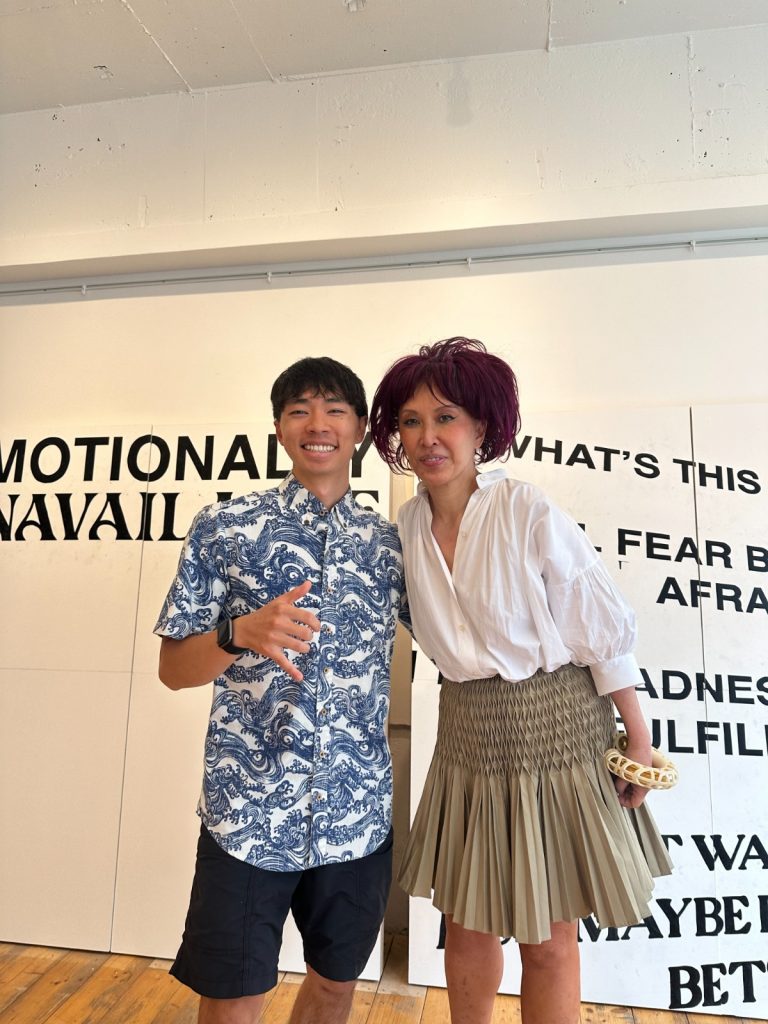
Lam puts the spotlight on the emerging art scene, the hottest places to eat, and where to shop for timeless design.

Pearl Lam

Pearl Lam is a gallerist, collector, patron, and curator with over 20 years of experience being at the forefront of reimagining China’s cultural place in the world. Lam is a leading authority on Asian art, design and the international contemporary art market with a network spanning China, U.K., and the USA. Lam’s long-term commitment to art and design is rooted in her mission to develop and promote cultural exchange between East Asia and the world, while also presenting Asia’s contributions to both traditions to a global audience.
As I stepped off the plane in Tokyo, the familiar sights and sounds of the city immediately washed over me, filling me with a sense of excitement and anticipation. There’s something about this city that always draws me in, something that draws me back time and time again—I used to visit every month, especially during Japan’s strawberry season during January to April.
Tokyo is a city that is bursting with creativity, with an art scene that is both vibrant and diverse. From traditional forms of art such as calligraphy and ukiyo-e, to contemporary art that pushes the boundaries of what is possible, Tokyo is a city that truly has it all. I’ve recently noticed a significant presence of the Chinese community here, which really adds another dimension to the richness of this cultural landscape. There is such an abundance of culture in this city—I’m so happy to be back.
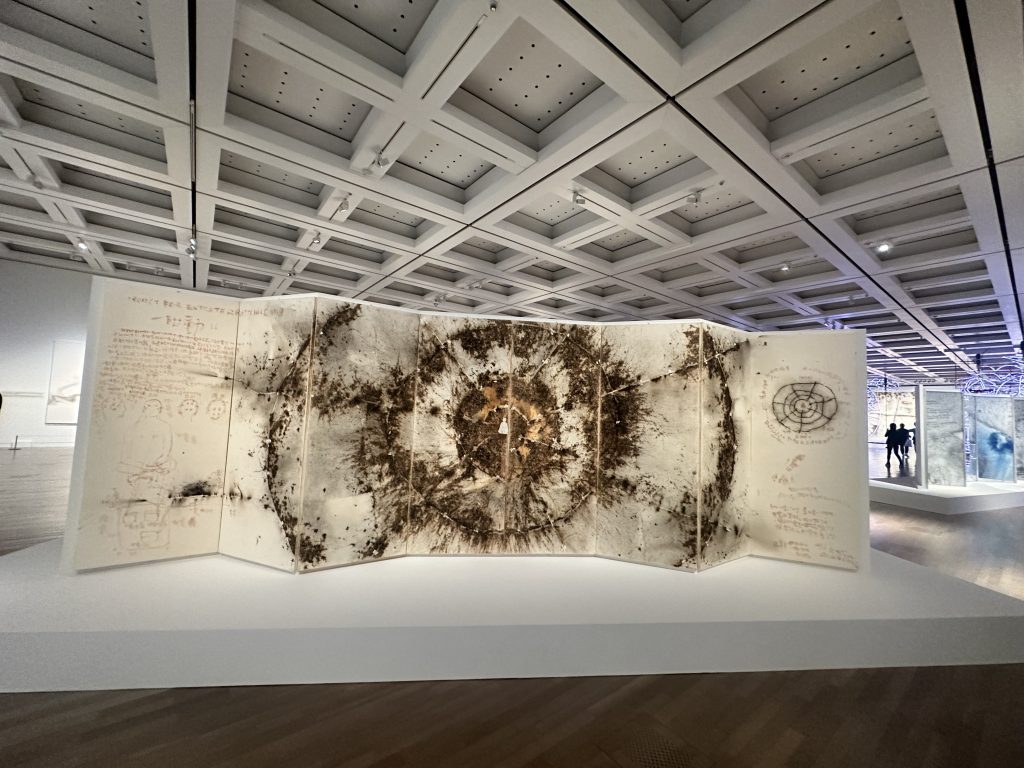
Cai Guo-Qiang, Fetus Movement II: Project for Extraterrestriels No.9 (1991). Gunpowder and ink on paper, mounted on wood. Photo by Pearl Lam.
I have just recently had the opportunity to visit Cai Guo-Qiang’s solo exhibition “Ramble in the Cosmos―From Primeval Fireball Onward” at The National Art Centre, which I thought was incredible. I loved how many of the pieces on display featured explosions of various types, and the strong emphasis of this theme, one of the defining features of Cai’s art. From gunpowder drawings to firework displays, the exhibition created a real sense of drama and spectacle that I found mesmerizing and thought-provoking. It was a powerful and deep retrospective of Cai’s work, showcasing a full range of his artistic vision and demonstrates why he’s considered one of the most important artists of his generation.
The use of fireworks takes on a whole new dimension for Cai, who’s recent large-scale work realizes a symphony of fireworks with different hues and intensities to stage animated color fields in an open sky. At a time of intense geopolitical tension globally, he brings us a new sense of hope by celebrating what nature has to offer. The influence of his personal and artistic connections to both China and Japan along with his experiences living and working in Japan have had a profound impact on his art and life. Cai Guo-Qiang’s deep fascination with the universe and celestial bodies stems from his upbringing in Quanzhou, China. During his influential years in Japan (1986-1995), he honed his gunpowder technique and developed a strong connection with the people of Iwaki City. His explosive works have been exhibited globally, including his solo exhibition “Primeval Fireball: The Project for Projects” at P3 art and environment in Tokyo (1991), a significant milestone in his career.
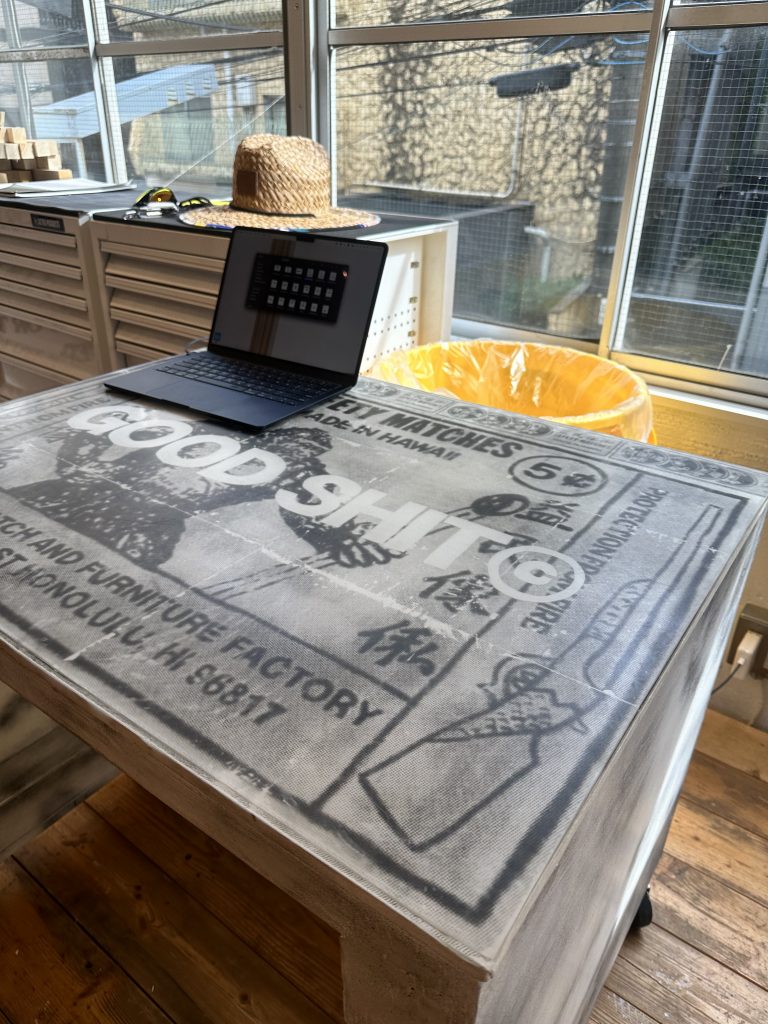
Michael Ho Studio. Photo by Pearl Lam.
One of my favorite things about Tokyo is the emerging art scene. I had the opportunity to visit the studio of Michael Ho, a fascinating emerging artist based in Tokyo that is really exploring his creative potential—he has a unique background and cultural heritage. As a Cantonese, Japanese American who currently practices in Tokyo, he brings a diverse range of influences to his art. He is like a melting pot of culture, blending elements from his Chinese, Japanese, and American heritage in his work. Through his art, Ho is finding himself and exploring his identity. This is a common theme among many artists who use their work as a means of self-expression and self-discovery. By drawing on his cultural background and personal experiences, he creates art that is both meaningful and thought-provoking. It’s interesting to note that Ho doesn’t speak Chinese, despite his parents being of Chinese descent. However, he still celebrates Chinese festivals, which suggests a strong connection to his cultural roots and a desire to honor his heritage in his own way—this is a common experience among many people who grow up in multicultural households or who have a complex cultural identity.
I think his work truly embodies the spirit of Japan. He has a strong fascination with language, typography, and their impact on tone, as well as their communication to viewers and the resulting perceptions that arise. His painting and sculptural practice semantically responds to capturing the tone of a post social-media generation and exploring the theme of internalized masochism and the way that this can be communicated linguistically.
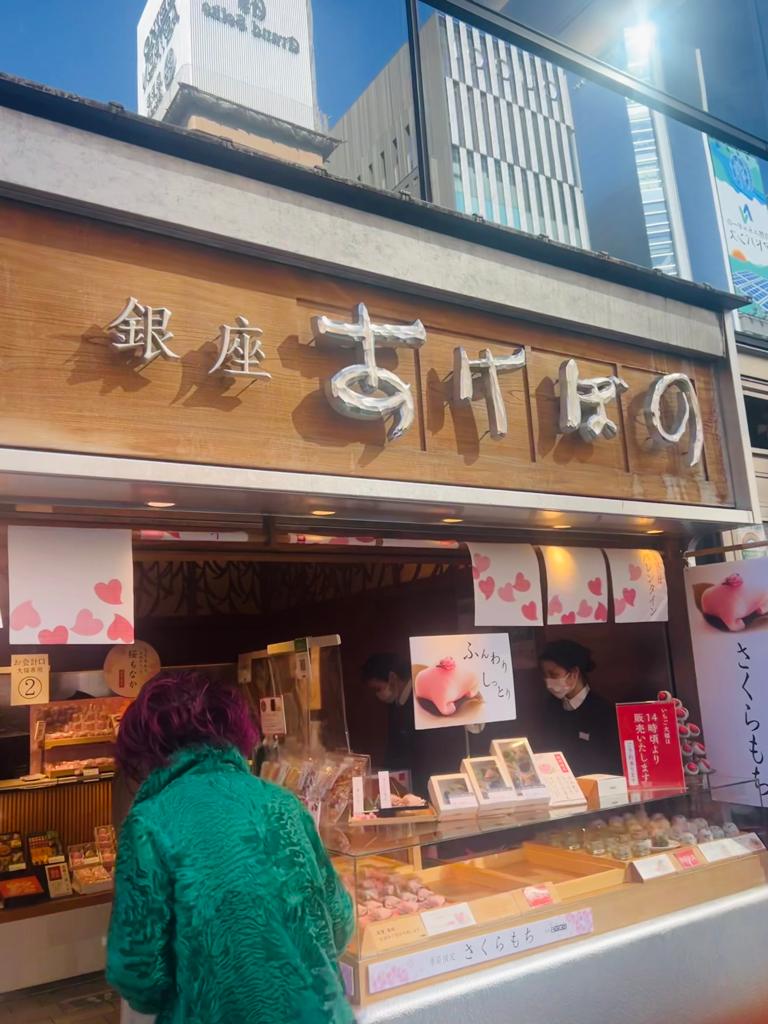
Visiting my favourite strawberry mochi spot, Ginza Akebono. Photo by Pearl Lam.
I’ve been so excited to eat at one of my favourite spots for Japanese cuisine, Kanda. Right in the heart of Tokyo in a quiet neighborhood, I booked a table here months in advance of my trip because it is so in demand—helmed by Chef Hiroyuki Kanda and Michelin-starred! This is a real hotspot if you’re looking for attention to detail and a seasonal menu. My go to signature dishes are the grilled abalone and sea urchin with gelée, which are always cooked to perfection. This is a Tokyo do-not-miss!
The Tokyo food scene brings back such fond memories for me, especially the renowned confectionary shop Ginza Akebono. I visit all the time—I’ve been coming here for over 10 years and not being able to visit during COVID was disheartening. It’s in the upscale neighborhood of Ginza, and their strawberry mochi is always on my mind. My memories of strawberry season visits come back to me when the sticky texture gives way to the juicy burst of the fresh strawberry—an incredibly satisfying flavor experience.
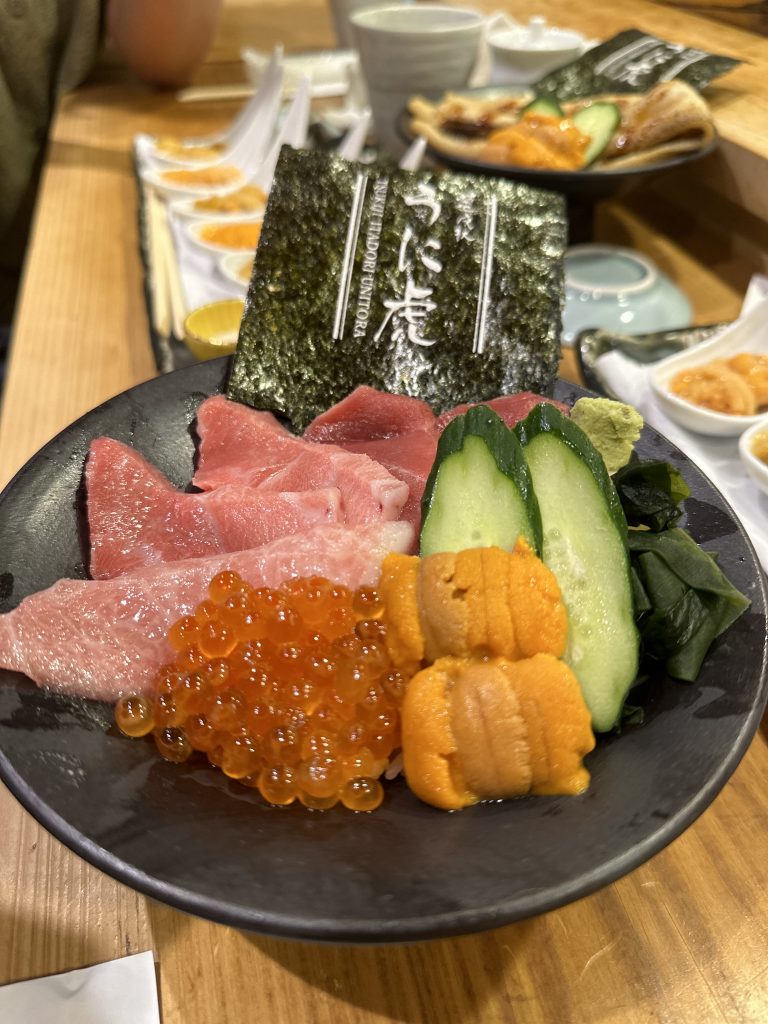
My favourite uni at Unitora Nakadoril. Photo by Pearl Lam.
Unitora Nakadori holds a special place in my heart—a few years ago, I asked a hotel I was staying in for a fresh uni recommendation. I can never find a good one when I’m in the U.K., and Tokyo has me craving it all the time. When I followed their recommendation, I ordered so much that the restaurant had to close for a moment to make all the dishes. The counter seating means you can watch the chefs prepare you food, which is all sourced from various regions in Japan and selected based on its freshness and flavor. I’ve been able to try all the different types of uni here; including uni donburi, uni sashimi, and uni tempura—it’s a popular spot for locals.
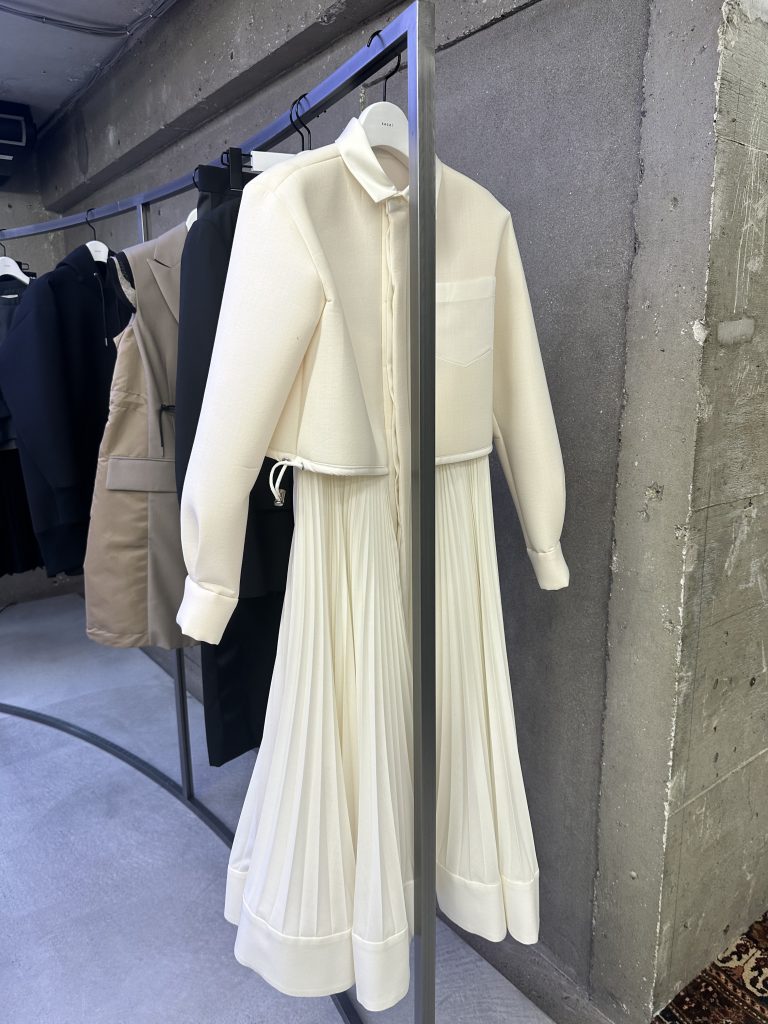
White dress at Sacai, 〒107-0062 Tokyo, Minato City. Photo by Pearl Lam.
I’ve just this week ordered some of the winter collection from Sacai during my visit to the store, which includes a timeless white dress I’m very excited about. I love Sacai’s innovative and creative approach; blending different fabrics, textures and patterns to create eye-catching signature pieces. Chitose Abe, the Founder and Creative Director is a master at creating a cohesive and harmonious look that is timeless and modern. I’m a huge fan of Sacai’s meticulous craft and use of the finest of materials.
Recently I have also been buying some pieces from the renowned Japanese designer Junya Watanabe’s Winter collection which should be with me later this month or early August—notably a new leather jacket. Junya Watanabe is known for its innovative designs that often incorporate unexpected materials and techniques. I love how he experiments with fabrics, often using materials in unconventional ways to create unique textures and shapes with an incredible, experimental approach—pushing the boundaries of what’s considered possible and often incorporating traditional craftsmanship, such as hand-dying and weaving techniques.
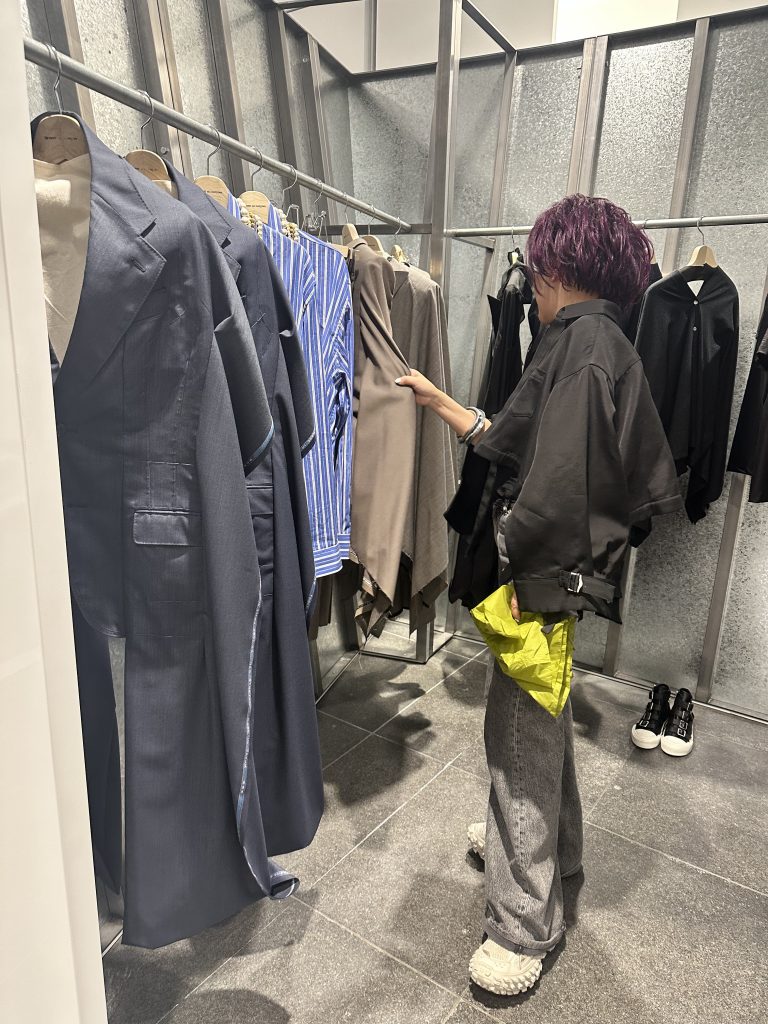
Shopping new collections in Tokyo. Photo by Pearl Lam.
Of course, there is Undercover too, known for its avant-garde and punk-inspired designs that often incorporate bold graphics, text, and unexpected details. It has gained a cult following among fashion enthusiasts and has been influential in shaping the Japanese fashion scene.
More Trending Stories:
An Israeli First-Grader Stumbled on a 3,500-Year-Old Egyptian Amulet on a School Trip